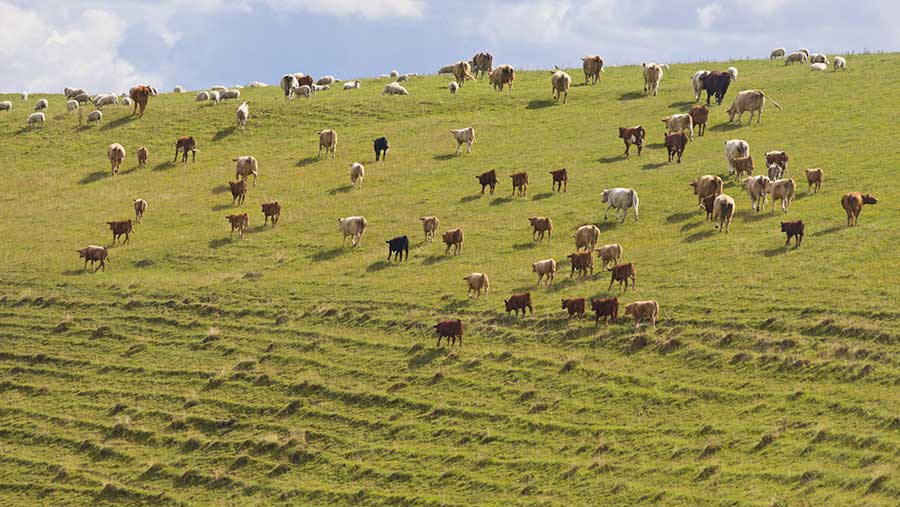Larger herds linked to higher risk of bovine TB
 © Juice/REX Shutterstock
© Juice/REX Shutterstock Larger herds are being linked to a higher risk of bovine TB, research has found.
The study by the University of Exeter found farms with herds of 150 cattle or more were 50% more likely to suffer a TB outbreak than herds with fewer than 50 animals.
Maize growth, fewer hedgerows and the use of silage were also blamed for contributing to a higher risk of TB in herds.
The authors suggested reducing the herd size in high-risk TB areas could help with the long-term strategy to combat TB.
See also: Too early to judge badger cull success, says farm minister
Patterns of crop production and feeding were also important, with the risks increasing with practices linked with higher productivity systems.
For every 10ha of maize – a favourite food of the badgers that “play a role” in transmitting the disease – TB risk increased by 20%, researchers said.
“If lower-intensity production means better animal health, it offers a sustainable long-term strategy in high-risk areas.”
Dr Fiona Mathews
The feeding of silage was linked with a doubling of the risk in both dairy and beef systems.
Landscape features such as deciduous woodland, marshes and hedgerows were also important. For example, on farms with 50km of field boundaries, each extra 1km of hedgerow was linked with a 37% reduction in risk.
This is likely to be because there is less contamination of pasture by badger faeces and urine in hedgerow-rich areas, the researchers said.
Marshland was associated with increased risk, possibly as a secondary effect of infection with liver fluke – a disease linked with wet environments and which interferes with the diagnosis of bovine TB in cattle.
Dr Fiona Mathews, associate professor in mammalian biology, who led the study, said: “TB is absolutely devastating for farming, and it’s essential that workable solutions are found.
“In the worst-hit areas, farms are frequently affected over and over again with crippling consequences. If lower-intensity production means better animal health, it offers a sustainable long-term strategy in high-risk areas.”
A Defra spokesman said large herd size was a well-known risk factor, as the risk of TB slowly increases as herds get bigger. But that did not necessarily mean that larger herds were farmed more intensively.
The spokesman added: “Biosecurity is a key element of the government’s 25-year strategy to eradicate bovine TB from England. This also includes strict surveillance, tight controls on cattle movements, vaccinating badgers where it is effective and culling where the disease is rife.
“We encourage livestock keepers to take all necessary precautions to protect their herds from bovine TB.”
The past few decades have seen radical changes in farming practices. Half of British dairy farmers have gone out of business since 2002.
Those that remain have larger herds and greater productivity: average herd size increased from 75 animals in 1996 to 133 in 2014 (a rise of 77%), and the annual yield increased from 5,775 litres a cow in 1995 to 7,535 litres a cow in 2013 (a rise of 27%).
Tell us your views on this study. Will the findings make you change your farming practices? Email the FW Livestock team fwlivestock@rbi.co.uk
